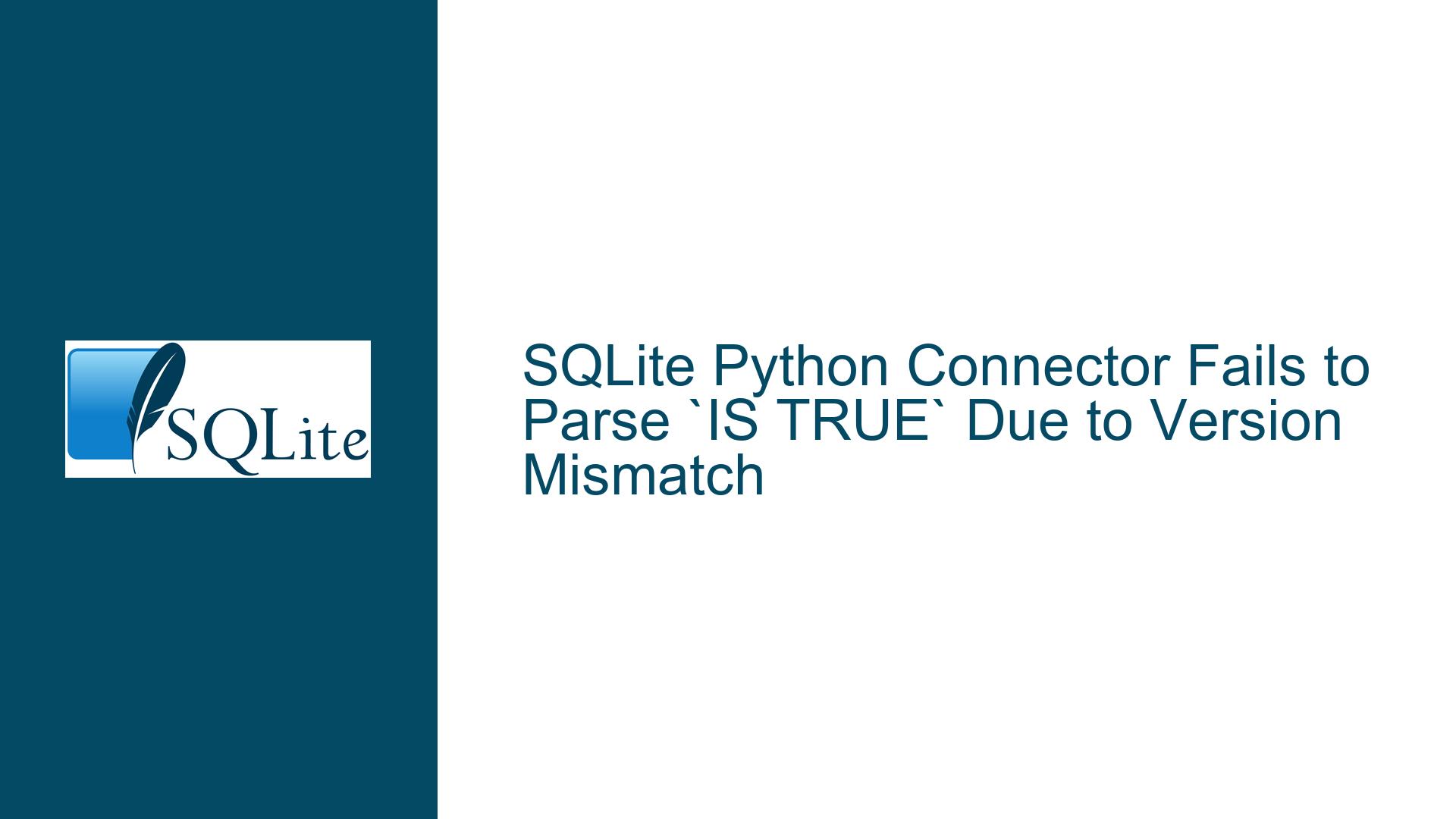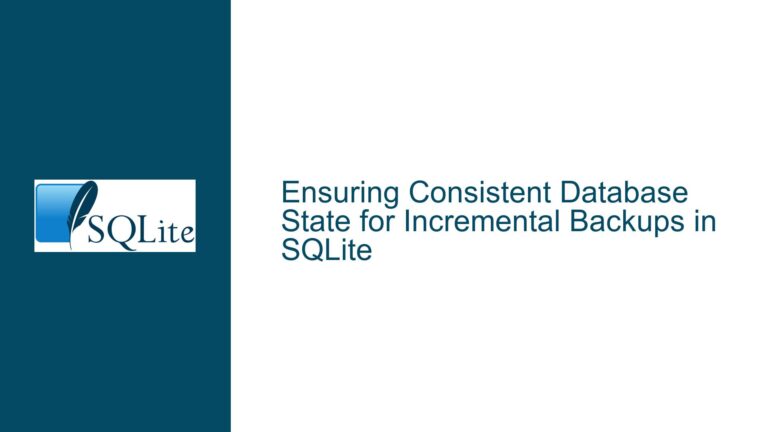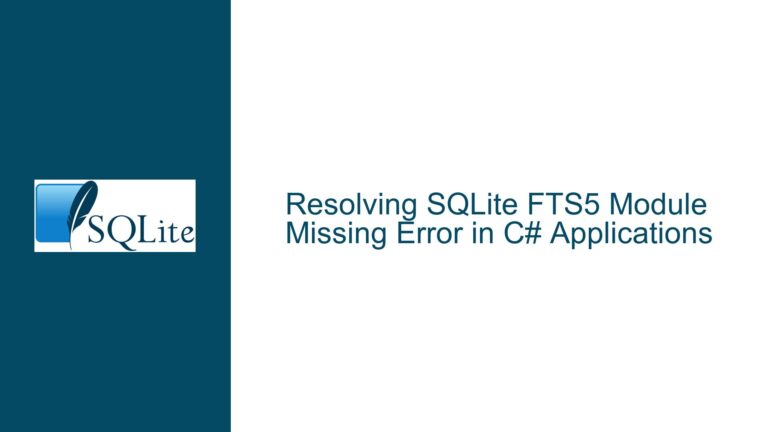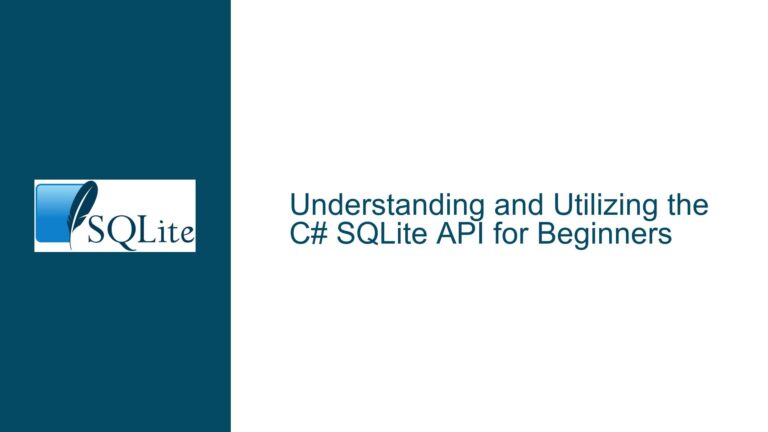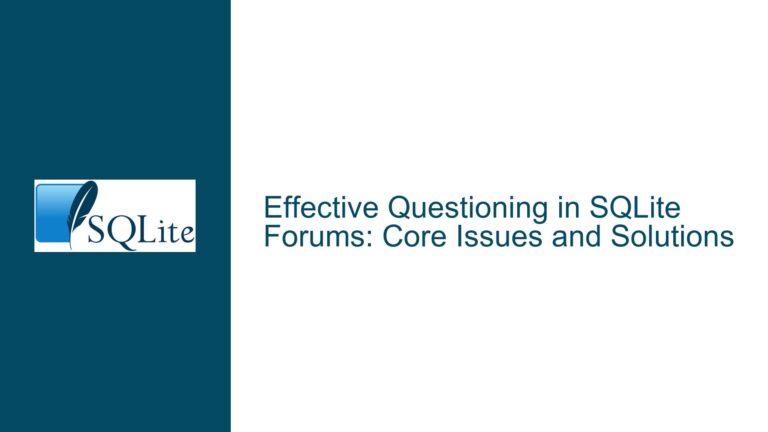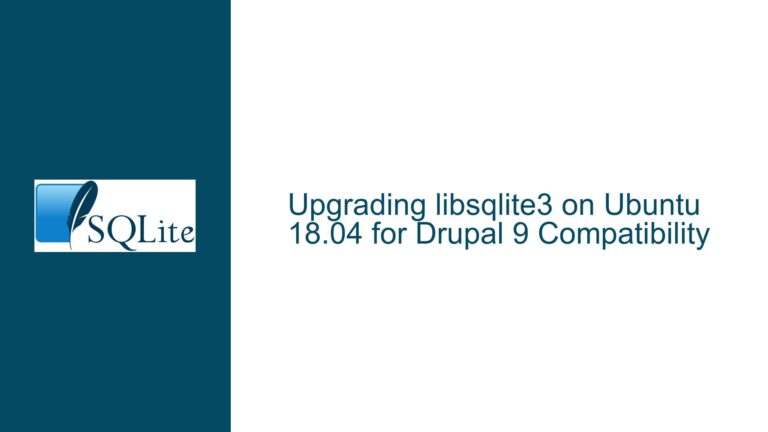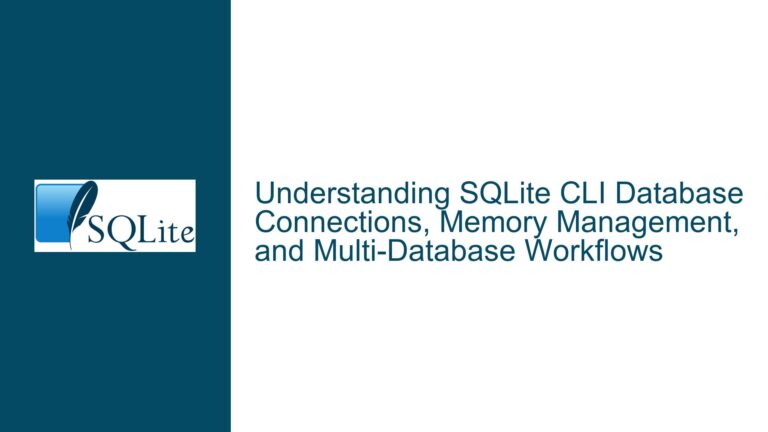SQLite Python Connector Fails to Parse `IS TRUE` Due to Version Mismatch
SQLite Python Connector Misinterprets IS TRUE as Column Reference
The core issue revolves around the SQLite Python connector failing to parse the IS TRUE clause in a SQL query, resulting in the error message no such column: TRUE. This error occurs specifically when executing a query through the Python sqlite3 library, while the same query executes successfully in the SQLite shell. The discrepancy arises due to a version mismatch between the SQLite library embedded in the Python environment and the standalone SQLite shell. The Python connector, in this case, is using an older version of SQLite that does not recognize TRUE and FALSE as boolean literals, instead interpreting them as column references.
The query in question involves a division operation that results in an undefined value (col_float_signed / 0), followed by a check using IS TRUE. While this query is valid in newer versions of SQLite, the older version embedded in Python’s sqlite3 library lacks support for boolean literals, leading to the misinterpretation of TRUE as a column name. This issue highlights the importance of ensuring compatibility between the SQLite version used in your application and the features you intend to utilize.
Outdated SQLite Version in Python Library Causes Boolean Parsing Failure
The primary cause of this issue is the outdated version of the SQLite library bundled with the Python sqlite3 module. SQLite introduced native support for boolean literals (TRUE and FALSE) in version 3.23.0 (2018-03-12). However, many Python distributions ship with an older version of SQLite, which predates this feature. When the Python connector encounters the IS TRUE clause, it attempts to resolve TRUE as a column name, resulting in the error no such column: TRUE.
Additionally, the discrepancy between the SQLite shell and the Python connector can be attributed to the fact that the shell uses a different, potentially newer, version of SQLite. This inconsistency underscores the need to verify the SQLite version in both environments. The issue is further compounded by the fact that Python’s sqlite3 module is statically linked to its own version of SQLite, independent of the system-wide SQLite installation. This means that even if you update the system-wide SQLite library, the Python connector may still use the outdated version unless explicitly reconfigured.
Upgrading SQLite Library in Python and Alternative Solutions
To resolve this issue, you must ensure that the SQLite library used by the Python sqlite3 module supports boolean literals. This can be achieved by upgrading the SQLite library embedded in Python or replacing it with a newer version. Below are detailed steps to address the problem:
Step 1: Verify SQLite Versions
First, determine the SQLite version used by both the SQLite shell and the Python sqlite3 module. In the SQLite shell, you can check the version using the .version command. In Python, you can retrieve the version information as follows:
import sqlite3
print(sqlite3.sqlite_version)
Compare the two versions to confirm if the Python connector is using an outdated library.
Step 2: Upgrade SQLite Library in Python
If the Python connector is using an outdated version, you can upgrade it by replacing the embedded SQLite library. This process involves compiling a newer version of SQLite and linking it to the Python sqlite3 module. Follow these steps:
- Download the Latest SQLite Source Code: Obtain the source code for the latest version of SQLite from the official website (https://sqlite.org/download.html).
- Compile SQLite: Compile the SQLite source code into a shared library. On Linux, this can be done using the following commands:
wget https://sqlite.org/2023/sqlite-autoconf-3420000.tar.gz tar -xzf sqlite-autoconf-3420000.tar.gz cd sqlite-autoconf-3420000 ./configure make sudo make install - Replace the Python SQLite Library: Locate the
sqlite3module in your Python installation and replace it with the newly compiled library. On Linux, this is typically found in/usr/lib/python3.x/lib-dynload/_sqlite3.cpython-3x-x86_64-linux-gnu.so. Replace this file with the newly compiled library.
Step 3: Use an Alternative SQLite Wrapper
If upgrading the SQLite library is not feasible, consider using an alternative SQLite wrapper for Python, such as apsw (Another Python SQLite Wrapper). apsw provides a more direct interface to the SQLite C API and allows you to use the system-wide SQLite library. Install apsw using pip:
pip install apsw
Then, modify your code to use apsw instead of sqlite3:
import apsw
connection = apsw.Connection('test.db')
cursor = connection.cursor()
cursor.execute('SELECT "col_char(20)_signed" FROM table_10_undef_undef WHERE ( "col_float_signed" / 0 ) IS TRUE ;')
Step 4: Modify Query for Compatibility
If neither upgrading the SQLite library nor using an alternative wrapper is an option, you can modify the query to avoid using IS TRUE. For example, you can replace IS TRUE with = 1:
cu.execute('SELECT "col_char(20)_signed" FROM table_10_undef_undef WHERE ( "col_float_signed" / 0 ) = 1 ;')
This workaround ensures compatibility with older versions of SQLite that do not support boolean literals.
Step 5: Validate the Fix
After implementing the chosen solution, validate that the query executes without errors. Re-run the test script and confirm that the no such column: TRUE error no longer occurs.
By following these steps, you can resolve the issue of the SQLite Python connector failing to parse the IS TRUE clause. Ensuring that your SQLite library is up-to-date or using alternative methods to handle boolean logic will prevent similar issues in the future.
